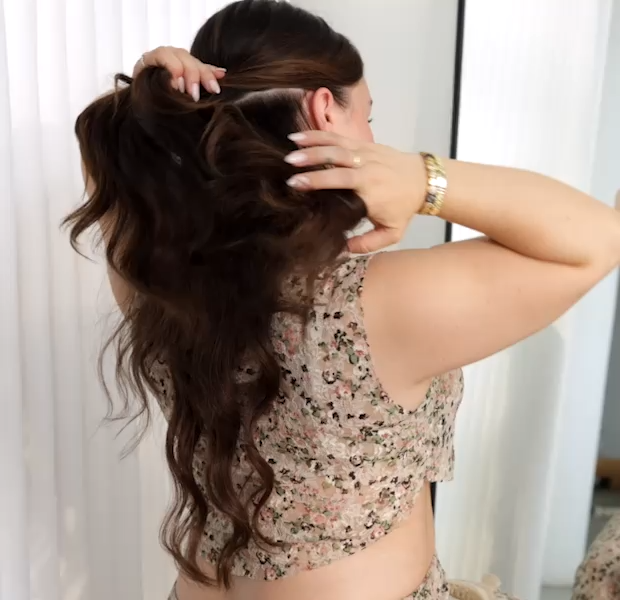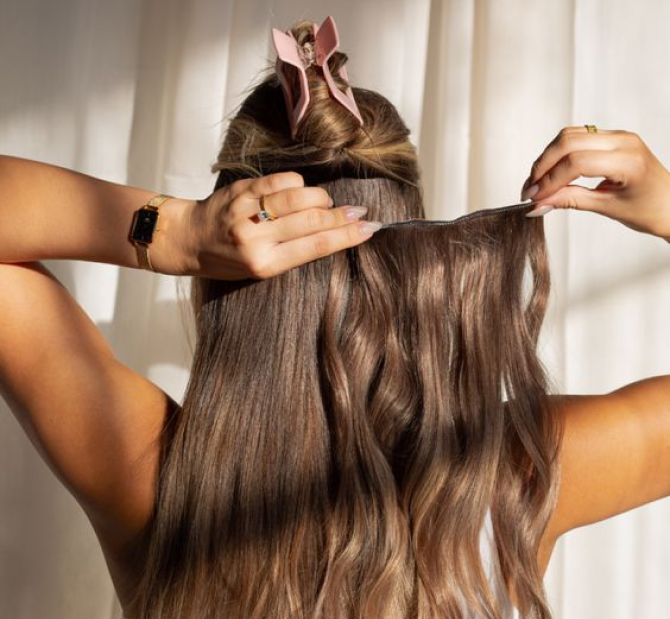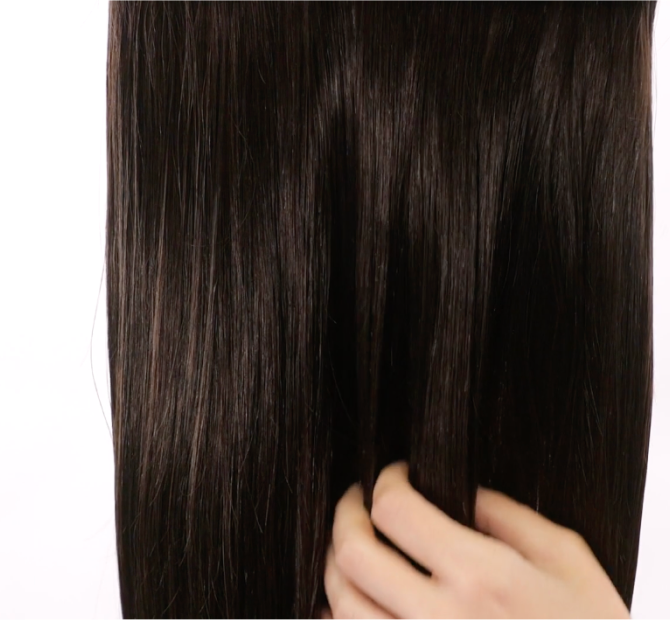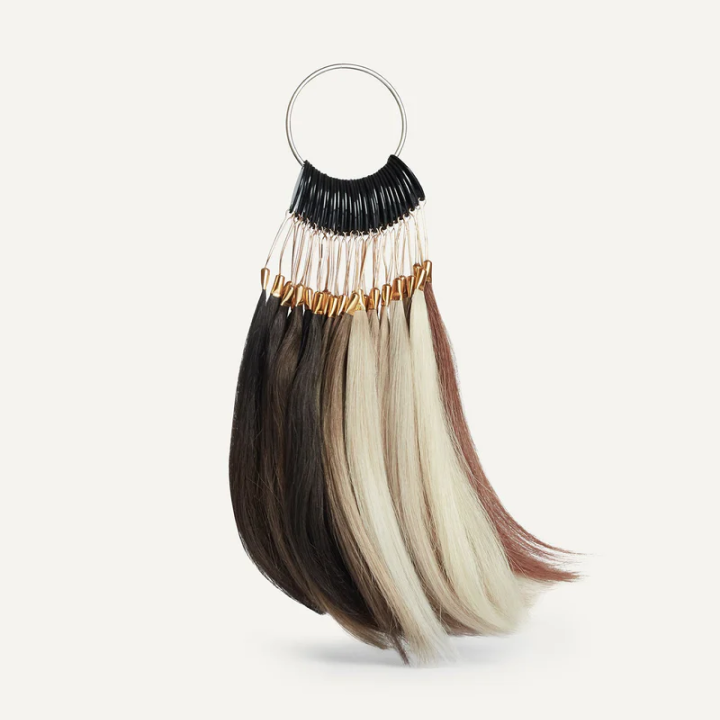
Extensions guide
Want longer hair? Experiencing hair loss? Just want to add more volume to your look? Our ultimate guide will teach you everything you need to know about hair extensions, from what the different types are to how to choose the perfect set for you.

What are hair extensions?
There are many types of hair extensions and application methods. Some hair extensions are semi-permanent and require the assistance of a professional to apply. In contrast, others are designed for daily use and can be applied by yourself at home in minutes.
Hair extensions are also commonly worn for special occasions like weddings, proms, and other milestones in life. If you have a hairstyle in mind but can't quite achieve it with your own hair, consider hair extensions or consult a trusted hair stylist to get their opinion on how hair extensions can help achieve your dream look.
Luxy offers DIY Clip-In hair extensions, the easiest and safest way to get longer and more voluminous hair at home. Clip-In extension wefts come with the clips already attached to them. This means you can take the wefts and easily clip them into your hair without additional costs, time, or professional help. They are perfect for everyday use as well as special occasions.
Clip-ins
Clip-In hair extensions have clips sewn to the base of each weft. Those clips are then snapped open, applied to the roots of your hair, and then snapped shut. Each weft is layered beneath your hair to create an instantly longer and fuller look while remaining completely invisible. This type of extension can be applied by yourself at home within minutes and causes zero damage to your hair. No professional help is required.
Tape-ins
Tape-in hair extensions are pre-taped and then taped or glued together on both sides of a section of your hair. This method typically requires professional application as you need someone to align them with the roots of your hair and then glue them using a heated tool. This is a semi-permanent solution that will need to be replaced every 1-2 months. It can cause damage to your hair as you're applying heat and glue to your own natural hair.
Sewn-Ins
Getting Sewn-In extensions is a lengthy process that starts by braiding your natural hair into cornrows and then using a needle and thread to sew the weave into the braid or cornrow. This can take several hours to complete. It is typically recommended for those with thicker hair due to the tight application and strain it can cause on the scalp. A professional needs to perform this type of hair extension due to the complexity of it.
Micro Links
Micro Link hair extensions are applied via a small silicone-lined bead that attaches tiny wefts of hair to small sections of your natural hair. A special tool is then used to secure the bead in place. A professional must apply these extensions due to the complexity and tools involved, which can take several hours to complete. While this particular style of hair extensions does not include heat or glue, the pressure and pulling of the micro link extensions can damage the hair.
Hair Pieces
Do you want to cover thinning hair or just play with a new look? Hair pieces are the perfect solution. Whether a Hair Topper, Clip-In Ponytail, or Clip-In Curtain Bangs, these easy-to-use pieces add coverage, length, and fullness exactly where you want them. No professional help is needed. Hair pieces come in various textures and styles, making them great for anyone experiencing hair thinning or simply craving a fresh look. Lightweight and natural-looking, they’re the ultimate way to switch up your style with minimal effort.

What are hair extensions made of?
Hair extensions can be made with natural human hair or synthetic hair. We recommend opting for human hair extensions as they will look the most natural, you'll be able to handle them exactly as you do your natural hair, and they'll last much longer.
Pros: They can last up to a year or longer, can be heat styled, can be dyed, look natural, and can be washed just like your own hair.
Cons: Real human hair extensions are usually pricier and cost over $100, depending on the style.
Pros: They are more affordable than natural human hair extensions and can start at around $50, depending on the style.
Cons: They don't last as long as natural human hair extensions (1-3 months), cannot be heat styled or dyed without damage, and typically do not look as natural as real human hair. You cannot wash them.

How do I choose the right color of hair extensions?
The most important factor when choosing the right color of hair extensions is to consider the undertones in your hair. Whether your hair's undertones lean warm, cool, or neutral, you'll want to select a color that matches your undertones best.
Look at your hair in natural lighting (facing a window or outside in natural sunlight) and examine the colors you see in it. You have warm undertones if you see yellow, golden, or red hues throughout your hair. You have cool undertones if you see blue or green hues throughout your hair. If you think you are somewhere in-between, you likely have neutral undertones.
When searching for the right hair extension color, keep an eye out for the product descriptions, as they'll typically note what undertones are included in the hair.
Companies will use similar terminology when defining warm, cool, and neutral colors, so you can also play the name game.
Warm: Look out for names that include Golden, Butterscotch, Honey, Chocolate, Mocha, and Cherry.
Cool: Look out for names that include Platinum, Ash, Cool, Walnut, and Icy.
Neutral: Look out for names that include Natural, Medium, and Neutral.












